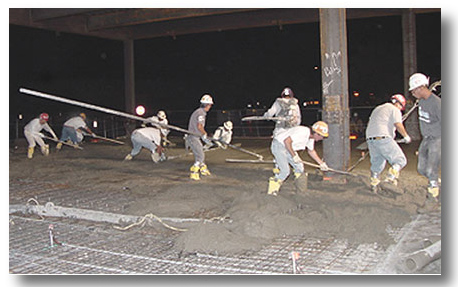I’ve just completed a two day visit with an incredible contractor. They are not very large in revenue this past year; they did a little more than five million dollars in sales. However, what they made would easily be envied by many contractors, no matter the size.
Looking deeper at the reasons for their prosperity it was glaringly obvious. They control their expenses! How? The answer is even more simple…and obvious. They PLAN!
 Each Monday morning they hold an employee wide meeting that reviews and reminds each crew as to their work schedule for the week. In front of everyone each crew provides their strategy to get the week’s scheduled work completed. Normally this type of meeting is attended for crew leaders, estimators, schedulers, and owners. Not at this company, everyone is there. In fact, members of each crew actually provide the strategy and execution plans for the week.
Each Monday morning they hold an employee wide meeting that reviews and reminds each crew as to their work schedule for the week. In front of everyone each crew provides their strategy to get the week’s scheduled work completed. Normally this type of meeting is attended for crew leaders, estimators, schedulers, and owners. Not at this company, everyone is there. In fact, members of each crew actually provide the strategy and execution plans for the week.
The second obvious aspect of planning is what is completed for each project completed. Each morning each crew meets to discuss what is needed for that day. No truck leaves the yard until every truck and worker has exactly what they need to complete that day’s work. At the conclusion of each day the crew then reconvenes to discuss what happened during that day of work and then discussion about what will be needed the following day. The crew leader takes notes, if needed, on each meeting.
Now, many contractors hold meetings such as described in the previous paragraph. What then makes this contractor’s effort unique? Quite honestly, it is the amount of detailed thinking and planning that takes place. Let me briefly share some of the critical components of successful planning that is embraced by my contractor friend. [pullquote]Now, many contractors hold meetings such as described in the previous paragraph. What then makes this contractor’s effort unique? Quite honestly, it is the amount of detailed thinking and planning that takes place. [/pullquote]
First, the plan for the day’s project(s) is documented. Each day the crew leader documents specifically what the particulars for that day are, including:
- Material need
- Labor need
- Equipment/tools need
This is merely the beginning. Next, the crew discusses:
- What preparation is needed?
- Who will complete the preparation?
- What is the method or process that will be followed to execute the project?
- Confirmation of understanding of the prints or drawings?
For many contractors, the previous questions may appear to be overly simple and assumed. My experience with contractors however leads me to believe that the leaders may in fact raise these same questions however they are most often raised inside the leader’s head. Most crew leaders do not discuss this information with their crews. This is a tactical mistake that leads to misunderstanding and a waste of worker’s time on the job site.
Another final effort that is practiced by contractors really on their “A-game” is the allowance of questions to be raised by the crew workers, the very people who will be executing the plan. Engaging your crew in the planning phase of any project, no matter what the size of the project is, will breed greater attention to details, more focused energy on getting the needed results, and actually reduce wasteful costs due to workers lack of knowledge or understanding about the project needs.
In review then let me outline what you need to do to make planning more of a positive and effective tool and technique:
- Document your plans for each project. (Don’t assume anything by anyone!)
- Engage the actual workers who will be completing the scheduled work in the planning discussion.
- Ask the same questions for each project, such as:
- What are the Material, Equipment/Tools, & Labor Needs?
- What preparation must be accomplished prior to starting project?
- How can I best position my crew to complete the work in the most cost effective and quality manner?
- What contact(s) must be made with the client, other contractors, suppliers, etc.?
- Are our copies of drawings/prints complete? Any changes needed?
- Conduct a “Post Mortem” on each Project. Discuss lessons learned, needed adjustments for the next project.
[pullquote]Planning is more than simply scheduling future work. It is the methodical breakdown of everything that will be executed to complete the project that moves a contractor from average to superior.[/pullquote]
There really isn’t anything unusual or extraordinary about the four point outline. What is unusual and extraordinary are the contractors who are disciplined to practice their planning efforts consistently, no matter the size of the project. Contractors cost themselves greatly when they pay little to no attention for planning on smaller jobs. It is often the smaller jobs that can cost you the most!
Planning is more than simply scheduling future work. It is the methodical breakdown of everything that will be executed to complete the project that moves a contractor from average to superior. For my money, focus more on planning and you will see greater return for every dollar spent!

 have been as satisfied as you thought. The secret in repeat business isn’t selling what you’re “going to do” for the customer but what you have proven that you “can do.” Customers don’t buy bad memories.
have been as satisfied as you thought. The secret in repeat business isn’t selling what you’re “going to do” for the customer but what you have proven that you “can do.” Customers don’t buy bad memories.